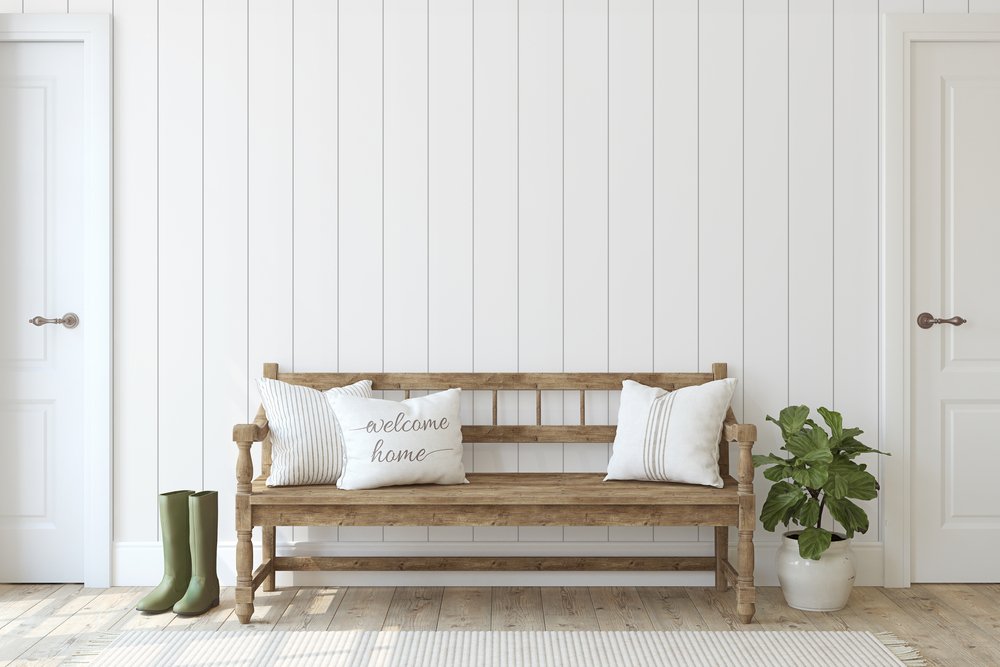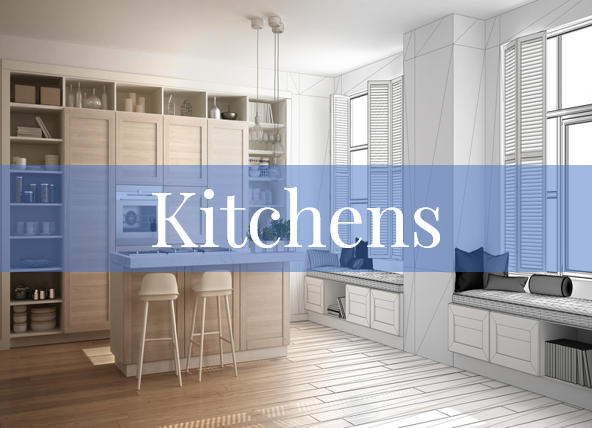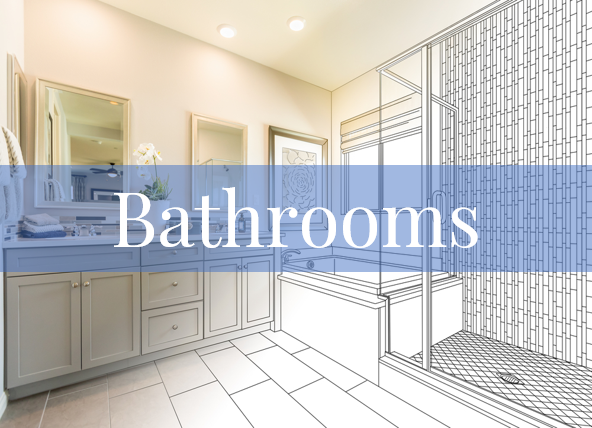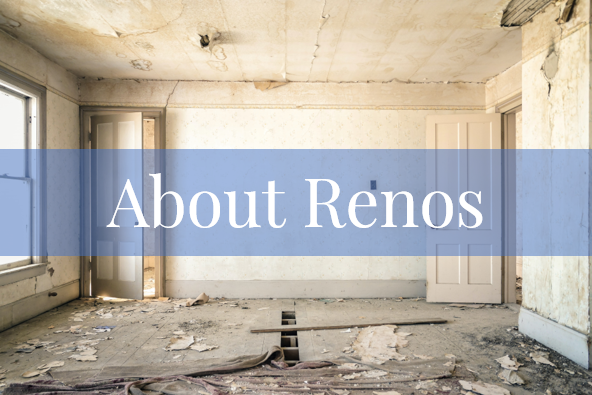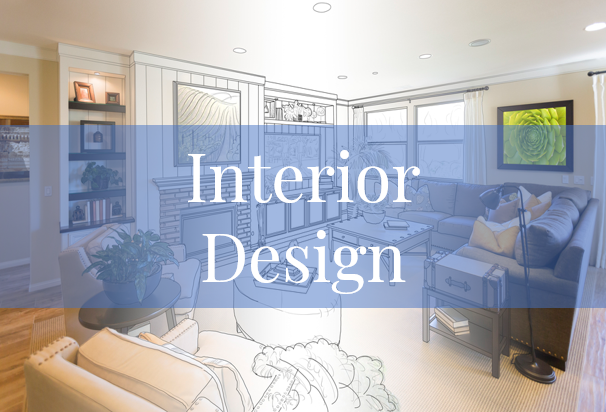6 Ways to Create an Accent Wall in Your Home
/You don't have to do a complete renovation in order to totally change the feel of a room. Accent walls are a great way to add some texture, interest, and even a bit of luxury. There are many different ways to incorporate an accent wall in almost any room of your house. We'll explore some of those options and show you how you can freshen up your space and add a touch of luxury to your home.
Prefer to listen?
Wallpaper
Wallpaper has come a long way since the days of flocked, floral wallpaper in the 1970s. With so many options to choose from, a beautiful, well-placed wallpaper can become an incredible focal point in a room. Years ago, it was common to have an entire room wallpapered, but now wallpaper is typically used as an accent wall only, which really makes it a beautiful focal point in a room.
The thing I love most about wallpaper is that it can hide a multitude of imperfections. I recently met with a client who lived in a 90-year-old house that was done in plaster and lath. If you're not familiar with plaster and lath, it is solid, but it can crack, and over the years, every little imperfection shows. There was one particular wall in her living room that was truly showing its age. She didn't really want to do the necessary drywall repair for fear that the same thing would happen again a few years down the road. We talked about texturizing the wall, but she wasn't crazy about that idea either. When I suggested wallpaper, I could see her eyes light up. The wallpaper would hide the multitude of sins that were evident on that wall, and it would add a lot of interest to the room.
I love to use bold, geometric designs when they're applicable to the style of the house. These designs add a lot of visual interest and depth to a room. Some of the geometric designs out there even have metallic features, which can add a touch of luxury and richness to the right room.
The best thing about using wallpaper on an accent wall is that it can really break up the monotony of all four walls being painted the same colour. Select a wallpaper in a contrasting colour or one that complements the colour and furniture in your room.
Wallpaper can even create a faux look. A client loved the idea of tiling an accent wall in her bathroom. However, she didn't like the price tag that came with the tile she had picked out. Nor the cost of the labour to install it. I had recently discovered a beautiful wallpaper that looked like Carrara marble. So, we installed that wallpaper instead as an accent wall behind the vanity. It looks fabulous and created the tiled wall look she was after for substantially less money and in a fraction of the time.
Wallpaper doesn't even have to have a colour or pattern on it! We had a client who wanted to add some texture to her century home. We found a beautiful textured wallpaper that was paintable. It came in white, and then we just painted it the same colour as the rest of the walls in the room. It created a beautiful focal point by allowing the eye to focus on the texture.
2. Different Paint Colours
Another great way to add an accent wall to a room is by painting one or more walls a different colour. There are so many different options for selecting that paint colour. You could opt for a lighter or darker shade of what you have on the other walls, or you could go with a completely opposite colour to really create some bold interest. Using a colour wheel is a great way to help you with your colour selection. A colour wheel can also help you select the perfect wallpaper if you're planning on using it for your accent wall.
Here's a quick lesson on how to use a colour wheel to help you select the colour you want to use on your accent wall.
The colour wheel consists of three primary colours: red, blue, and yellow. These are pure colours that cannot be made from other colours. Next are the secondary colours: orange, green, and violet. These colours are formed when equal parts of the primary colours on either side of them are mixed. The last set of colours on the colour wheel are tertiary colours, which are formed by mixing a primary colour with a secondary colour.
You can use the colour wheel in four different ways.
Monochromatic Colour Scheme. This is using one type of colour and making it either darker by adding black or lighter by adding white. An example of this might be pale blue, sky blue, and navy.
Analogous Colour Scheme. This is where you select colours that exist side-by-side on a colour wheel. For example, orange, yellow, and green work well together for a relaxing yet still colourful combination.
Complementary Colour Scheme. This is using two colours that are directly opposite each other on the colour wheel. For example, using blue and orange in a room will add a lot of energy to the space.
Triadic Colour Scheme. As the name might suggest, this uses three colours from the colour wheel that are equally spaced from each other. An example of this would be turquoise, fuchsia, and yellow-orange. A triadic colour scheme often adds an energetic and happy feel to a room.
Whether you're selecting a paint colour or wallpaper, remember that the colour you choose also has an emotional effect on the room. For example, if it is your bedroom that you are selecting colours for, you don't want to select a colour that is highly energetic. You want to select colours that will be soothing and calming and help you get a restful night's sleep. Blues and greens are perfect for this.
Don't forget that your accent wall doesn't have to be painted one solid colour. Picture this… You've decorated your little boy's room in a couple different shades of blue, and you want to create an accent wall. Think about 12-inch alternating blue and white horizontal stripes on that accent wall!
3. Fireplace Wall
You may already have an accent wall that just needs to be dressed up a little. If you've got a fireplace in your room, you've already got a focal point. Consider painting the bricks if your fireplace still has those old red bricks on it. Think about removing the bricks completely and putting in some modern tile or stone veneer around the fireplace. Maybe your fireplace is okay, but you need to fill in the space on either side of it. Consider some built-in bookcases that will provide excellent storage.
4. Photo Collage
Whenever we do renovations, my clients often show me old family photos that they've come across while they 'declutter' the space they are renovating. One client did not want to part with any of the photos but just didn't know what to do with them. She had a beautiful long hallway, and I suggested framing all of the photos that she wanted to keep and putting them up on the wall at the end of the hallway. It became a treasured memory of fun times with loved ones while creating a beautiful focal point for an otherwise neutral hallway.
You can do something similar with any wall in a room. Be careful not to overwhelm the space, though. If you're wanting to create a photo collage in a living room, for example, those walls are usually fairly long. You don't want to fill the entire wall with photos. Consider creating a photo collage above the sofa.
Here's a great tip to help you figure out how to lay out your photos: Only select two or three colours and styles of frames. You don't want to have 15 photos and 15 different types of frames on the wall. Next, lay out all of the photos on the floor and rearrange them until you're happy with the layout. That way, you're not putting 30 nail holes in your wall and trying to figure out exactly how you want them to look.
5. Shiplap
Shiplap has gained a lot of popularity over the years. Typically installed horizontally, it can add a lot of interest to a room without being overly bold or dramatic. Generally made of wood, shiplap will instantly warm up any space.
Another client used the shiplap idea but altered it a little to create an accent wall in his office at work. Instead of using true shiplap, he took vinyl plank flooring that looked like wood and installed that on his wall. From a distance, no one could tell the difference, and it still created a beautiful accent wall and added an element of warmth because of the look of wood.
6. Tile and Stone
Tile has been very commonly used as an accent wall in bathrooms, but it's gaining popularity in almost any room in your home. Stone tile (tile that looks like brick or stone) is often installed in family rooms or finished basements. We often see stone tile flanking a fireplace, but it's starting to become popular for almost any room in the house. We've even installed stone tile on the front of custom-made bars in basements. Using a stone veneer works exceptionally well in a cottage or rustic décor. However, we've also used it in a contemporary setting to add a touch of warmth to any room.
In summary…
Accent walls have become very popular, and there are so many options for how you can make them a focal point in your home. Using bold colours, patterns, or textures, you can create an epic space or just as easily add a touch of luxury to your room. This is your chance to get bold and creative if the spirit moves you. Check out all of the options that are available, and let the magic transform your space.







